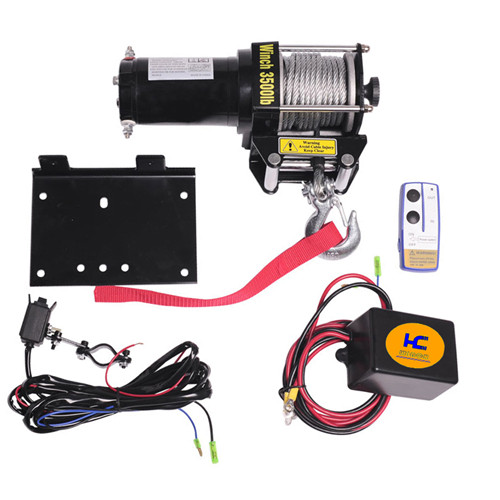How Does the ATV Winch Work?
ATV winches are indispensable tools for off-road enthusiasts. Whether you're stuck in mud, traversing rocky terrain, or pulling heavy loads, an ATV winch can be a lifesaver. In this comprehensive guide, we'll delve into the intricacies of how ATV winches work, providing you with a detailed understanding of their mechanics, components, and applications.
The Anatomy of an ATV Winch
1. The Drum
At the heart of every ATV winch is the drum. This cylindrical spool is where the winch cable or rope is wound. When you engage the winch, the drum begins to turn, either winding in the cable to pull your ATV or unwinding to release it.
2. The Cable or Rope
The cable or rope used in ATV winches is typically made of high-strength materials like steel or synthetic fibers. These materials are chosen for their durability and ability to withstand heavy loads. The cable is wound around the drum, and as it's pulled in, it exerts the force needed to move your ATV.
3. The Motor
Powering the winch is an electric motor. This motor is responsible for turning the drum, either in the winding or unwinding direction, depending on the winch's operation mode. The motor is controlled by a remote switch, allowing you to operate the winch from a safe distance.
4. Gear Train
To increase the pulling power of the winch, a gear train is used. This system consists of a set of gears that can multiply the force generated by the motor, making it easier to move heavy loads. The gear ratio determines how much force the winch can exert, and it can be adjusted for different tasks.
Understanding Winch Operation
Now that we've covered the key components of an ATV winch, let's dive into how they work together during operation.
Engagement: When you decide to use the winch, you engage it by activating the remote switch. This sends a signal to the electric motor, telling it to start turning.
Drum Rotation: As the motor starts turning, it rotates the drum. If you're pulling your ATV out of a sticky situation, the cable winds onto the drum, exerting force in the direction you desire.
Force Application: The cable attaches to your ATV, and as it winds onto the drum, it pulls your vehicle. The force generated is what helps you overcome obstacles or recover your ATV when it's stuck.
Deactivation: Once the job is done, you release the remote switch, disengaging the winch. The motor stops, and the cable is locked in place, ensuring your ATV remains secure.
Applications of ATV Winches
ATV winches are versatile tools with a wide range of applications. Here are some common uses:
1. Off-Road Recovery
The most obvious application is off-road vehicle recovery. When your ATV is mired in mud or stranded on uneven terrain, the winch can pull it to safety.
2. Trail Building
ATV winches are also valuable for trail building. You can use them to move heavy logs, rocks, or other obstacles that obstruct your path, making it easier to create new trails.
3. Load Handling
Need to transport heavy items like game after a successful hunt? ATV winches are excellent for load handling. You can easily secure and transport heavy loads with precision.
4. Agricultural Work
In rural areas, ATVs are often used for agricultural purposes. trailer winch can assist in tasks like moving equipment, clearing debris, or even helping with livestock.
In conclusion, understanding how ATV winches work and their various applications can greatly enhance your off-road adventures. These powerful tools are not only a source of convenience but also a means of ensuring your safety during your outdoor escapades. Regular maintenance and safe operation will ensure your ATV winch remains a reliable companion on your off-road journeys.


